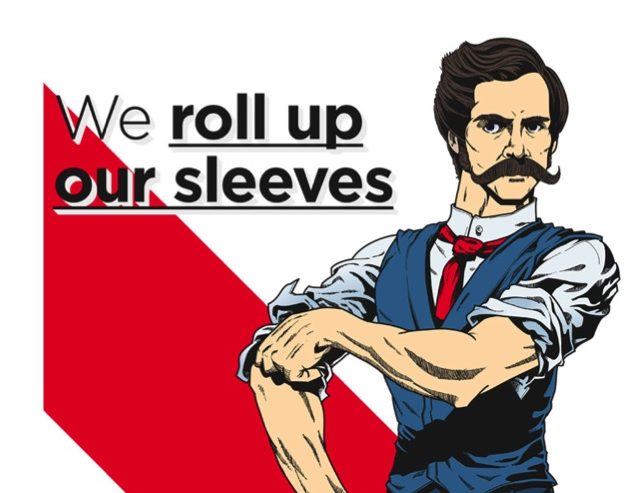As educators, we tend to be a very careful bunch. So when faced with controversial issues, we just wanna teach and avoid the fuss. But the recent pushback about Critical Race Theory is suddenly on the agenda at school board meetings and state legislatures across the country. Parents and politicians are saying, please teach American history but leave out the racialization of Americans and its impact on all of us in the making of that history. Is it possible to teach history in a way that is truthful without shame, blame or harming the self-esteem of our students and their families? Is it ethical to teach our country’s history omitting multi-perspectives? Because we are educators, we are skilled in preparing plans for executing information. Our first planning steps involve knowledge of the content and where our students are. We know that the classroom environment must be one where optimal teaching and learning happens by design. All stakeholders have to be engaged in the learning. No question is trivial. All opinions are needed to reach compromise. We listen to our students to learn. If we know where the pitfalls are, we can be prepared to help students to be critical thinkers and problem-solvers and in charge of their future selves. We can use the same skills to have authentic conversations with members in our school community, our staff, students and their parents about the teaching of American history that does not shame, blame or enflame. And if emotional harm is caused, we have skills and knowledge to restore the relationship. The controversy about Critical Race Theory is political, concerning and on our plate. There’s no way to avoid or dodge. Pre-plan and prepare for Curriculum Night!
Be afraid (in a good way) and do it (collaboratively with stakeholders with varying points of view) anyway!
DEMONSTRATING KNOWLEDGE OF THE PEOPLE AT THE TABLE –click photos to read the point of views of parents FOR & AGAINST Critical Race Theory. Strive for Understanding a Different point of view
DEMONSTRATING KNOWLEDGE OF THE CONTENT
What is critical race theory?
- Critical race theory is an academic concept that is more than 40 years old.
- The main idea is that race is a social construct, and that racism is not merely the product of individual bias or prejudice, but also something embedded in legal systems and policies.
Subsequently, the theory states all Americans have been racialized and that racialization positions each of us. Our race determines who benefits without protest from the ideals outlined in our Constitution and Declaration of Independence.
Our Founding Fathers were a diverse group in many ways. They ratified documents written in language that was inclusive because of who they were: abolitionists, slave owners, Christians, Deist, and there may have been an atheist or two. They were wealthy lawyers, doctors, and farmers. In an effort to create a more perfect union and secure the approval of the 13 colonies, our Founding Fathers made several key compromises: the Great Compromise, Electoral College, Three-fifths Compromise, and the Importation of Africans. However, all of their hard work, lengthy debates and discussions in the summer heat was meant to benefit the men in the room. White males who were not property owners, White women, regardless of their economic or social standing, Indigenous peoples, LGBQT+, free Africans, Filipinos and any other non-white group not captured in colonial census.
In order to form a more perfect union, our Founding Fathers managed to get the ball rolling on the imperfect union we are living with today.
So knowing…
“We cannot change the past, but we can change our attitude toward it. Uproot guilt and plant forgiveness. Tear out arrogance and seed humility. Exchange love for hate – thereby, making the present comfortable and the future promising.” Maya Angelou
CREATING AN ENVIRONMENT OF RESPECT & RAPPORT
As one of the five major social institutions, what’s an educator suppose to do when the other institutions – religion, economics, politics, and family- want to drive our curriculum and impact our practice. Can we teach the history of our great nation still respecting our diversity? Can we teach the history of our nation in a way that does not shame, blame, or cause emotional harm to any ethnic or gender identity group? Can we balance the scale of the shameful past with the heroes/sheroes who always kept their eyes on the ideals, from the time of our founding to today, spelled out in our founding documents.  Can we stop using our hands for scratching our heads and instead
Can we stop using our hands for scratching our heads and instead 
 What would happen if we were to bring all voices, staff, students and parents, regardless of their points of view to sit around the same desks to discuss, debate and make compromising decisions about how teach facts about America’s history?
What would happen if we were to bring all voices, staff, students and parents, regardless of their points of view to sit around the same desks to discuss, debate and make compromising decisions about how teach facts about America’s history?
- Read your state’s position on Critical Race Theory and your district’s interpretation of the law.
- What are the positions of the teacher’s and administrative unions?
- In collaborative groupings, develop a list of PROs and CONs about how America history can be taught respecting the multiple perspectives of all Americans.
- Visioning- What would America look like, be like, feel like if our society was legally equitable ? What are the implications for our practice.
DESIGNING COHERENT INSTRUCTION
A. Develop a framework for approaching the content that illustrates the dichotomy of our past and present histories BUT also presents balanced actions. The arc of righting social injustices in our country is curvy.
PROGRESS
- Indigenous Nations – before exposure to Europeans, support of the survival of early Europeans, indigenous leaders who resisted assimilation, and groups who were at crucial times, political allies.
REGRESS
PROGRESS
- how Indigenous people continue contributing to the progress of our nation.
Framing American history to acknowledge its dichotomous curves!
INSISTANCE/RESISTANCE INJUSTICE/JUSTICE RESTRICT/RESTORE CRUELTY/COMPASSION B. Acknowledge that the origins of all other Americans, with the exception of indigenous people, are rooted in countries around the world. We are who we are- Black, Asian, Hispanic/Latinx, White, Bi-racial, Muslim, Buddhist, Christian, Atheist, LBGQT+, Republican, Democrat, – one Nation under God (who is called differently depending on your religion). Never so evident as when you see us all together like the athletes representing our country in the 2020 Tokyo Olympics. We are literally the world! That is the greatness of our country.  Provide solid rationales for supporting why we must teach our collective history through a multiethnic, multicultural, multi-religious, gender binary and non-binary lens.
Provide solid rationales for supporting why we must teach our collective history through a multiethnic, multicultural, multi-religious, gender binary and non-binary lens.  c. American History can be taught without shame, blame or harming students.
c. American History can be taught without shame, blame or harming students.
- David Davenport, of the Hoover Institute, HOW NOT TO TEACH AMERICAN HISTORY
- K12 teacher perspectives on how they teach American history.
“To be hopeful in bad times is based on the fact that human history is not only of cruelty, but also of compassion, sacrifice, courage, kindness. If we see only the worst, it destroys our capacity to do something. If we remember those times and places where people have behaved magnificently, this gives us the energy to act. And if we do act, in however small a way, we don’t have to wait for some grand Utopian future. The future is an infinite succession of presents, and to live now as we think human beings should live, in defiance of all that is bad around us, is itself a marvelous victory.” ~ Howard Zinn
Throughout our history, there were always individuals and organizations fighting for equity!
Throughout our history, there were always individuals and organizations fearful of equity!

And yet, if we pay attention to the wants of 18-29 voters, they want a different reality.

